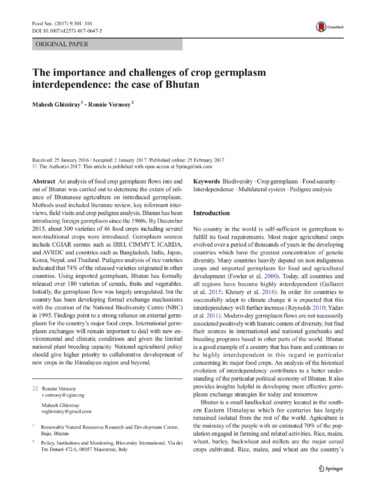The importance and challenges of crop germplasm interdependence: the case of Bhutan
An analysis of food crop germplasm flows into and out of Bhutan was carried out to determine the extent of reliance of Bhutanese agriculture on introduced germplasm. Methods used included literature review, key informant interviews, field visits and crop pedigree analysis. Bhutan has been introducing foreign germplasm since the 1960s. By December 2015, about 300 varieties of 46 food crops including several non-traditional crops were introduced. Germplasm sources include CGIAR centres such as IRRI, CIMMYT, ICARDA, and AVRDC and countries such as Bangladesh, India, Japan, Korea, Nepal, and Thailand. Pedigree analysis of rice varieties indicated that 74% of the released varieties originated in other countries. Using imported germplasm, Bhutan has formally released over 180 varieties of cereals, fruits and vegetables. Initially, the germplasm flow was largely unregulated, but the country has been developing formal exchange mechanisms with the creation of the National Biodiversity Centre (NBC) in 1995. Findings point to a strong reliance on external germplasm for the country’s major food crops. International germplasm exchanges will remain important to deal with new environmental and climatic conditions and given the limited national plant breeding capacity. National agricultural policy should give higher priority to collaborative development of new crops in the Himalayan region and beyond.

